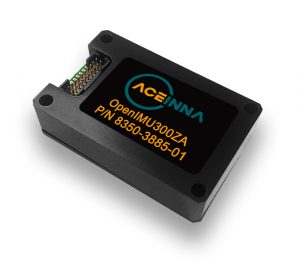[ad_1]
Whether you are developing autonomously guided vehicles for industrial applications, autonomous cars, factory or industrial robots, drones, ROVs, any kind of smart machine which needs to move – fast or slow, on land, in the air, or in water, integrating an IMU (Inertial Measurement Unit) based sensor network will greatly improve its navigation and self-location capabilities.
“Our breakthrough open-source Software for INS/GPS algorithm development is the first professional grade open-source navigation stack running on a low-cost IMU,” says Mike Horton, CTO of ACEINNA. “Not only will this kit save developers time and money, it is simple to use and does not require a PhD.”
OpenIMU enables advanced, easy-to-deploy localization and navigation algorithm solutions for a fraction of the time and cost of traditional methods. OpenIMU’s combination of open-source software and low-cost hardware enables rapid development of advanced solutions for drones, robotics, and autonomous applications.
OpenIMU’s extensible software-infrastructure provides all the code needed for algorithm development.
This freely downloadable stack includes:
* FreeRTOS-based data collection and sampling engine
* Performance-tuned, real-time, navigation-grade GPS/INS Kalman Filter library
* Free IDE/compiler tool chain based on Visual Studio Code
* JTAG debugging for debugging code loaded on IMU
* Data logging, graphing, Allen Variance plots, and maps,
* Extensive documentation
* Robust simulation environment with advanced sensor error models
To install OpenIMU stack now, follow the directions at https://developers.acceina.com. Several ready to install free GPS/INS and IMU applications are available on ACEINNA’s Navigation app store at https://developers.aceinna.com/apps
The OpenIMU Development hardware development kit includes JTAG-pod, precision mount fixture, EVB, and an OpenIMU300 module.
The OpenIMU module features ACEINNA’s 5 deg/Hr, 9-Axis gyro, accelerometer, and magnetometer sensor suite with an onboard 180MHz ARM Cortex floating-point CPU.
The IMU is delivered in a small (24x37x9.5mm), easy to integrate module that operates from 2.7-5.5VDC.
[ad_2]
Source link

